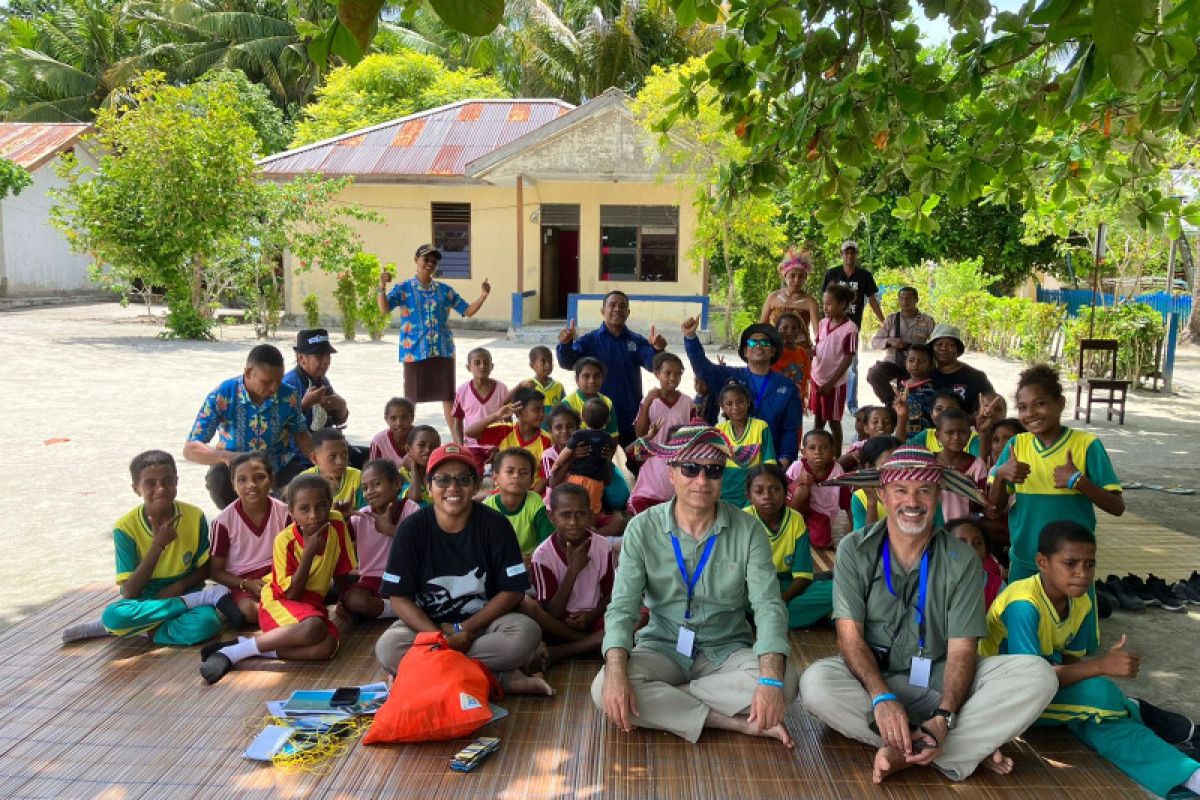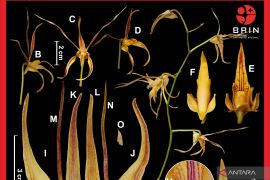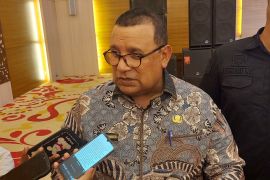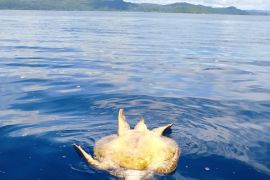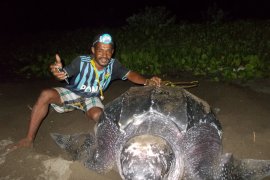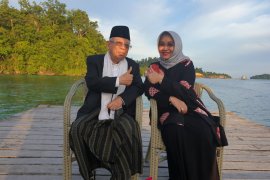During their visit last week, UNESCO’s Charalampos Fassoulas and Alireza Amrikazemi met with Pamembuk NGO activists and Jaga Laut (Guarding Sea) team members, who are seeking to preserve sustainable tourism in Piaynemo Geosite.
They observed and discussed the necessary issues with personnel from Pamembuk and Jaga Laut, Konservasi Indonesia's tourism and capacity building manager, Meidiarti Kasmidi, said in Waisai on Wednesday.
Konservasi Indonesia is a national foundation that aims to support the sustainable development and protection of critical ecosystems in Indonesia.
According to Kasmidi, Fassoulas and Amrikazemi visited Raja Ampat to assess the government's proposal for making the district's geosite a part of UNESCO Global Geoparks.
During their visit, they also talked to several native Papuan women who are producing and selling virgin coconut oil, skin moisturizer, and coconut hand-made soaps to tourists.
They lauded the management system applied in the villages of Saukabu, Saupapir, and Fam, which reflects the people-based tourism at the Piaynemo Geosite, Kasmidi said.
Related news: 32 foreign diplomats enjoy visit to Raja Ampat: Yembise
Meanwhile, Raja Ampat district head Abdul Faris Umlati said earlier that the visit of the UNESCO Global Geoparks personnel was aimed at evaluating a plan to make Raja Ampat a part of UNESCO Global Geoparks.
"We hope the Raja Ampat Geopark will be able to become a part of the UNESCO Global Geoparks so that our people can gain benefits from the status," he added.
According to UNESCO's official website, UNESCO Global Geoparks are "single, unified geographical areas where sites and landscapes of international geological significance are managed with a holistic concept of protection, education, and sustainable development."
ANTARA reported earlier that Raja Ampat is often called "Heaven on Earth,” "Miracle of Papua,” "Underwater Paradise on Earth,” or "Real Wonder of the World" for its mesmerizing marine panoramas.
The district has a geopark that is touted to be more beautiful than the one in Halong Bay, Vietnam.
In 2012, Raja Ampat was included in the list of the Real Wonders of the World. It has been recognized as one of the world's 10 most beautiful diving sites, and rated number one for its rich marine flora and fauna diversity.
Raja Ampat district has around 1,700 islands, including the Isle of Wayag, which is made of karst or limestone from other isles.
The waters of Raja Ampat have approximately 603 hard coral species, representing 75 percent of the total coral reefs in the world, according to information posted on rajaampatlodge.com.
Based on various studies by global conservation agencies, such as Conservation International and Nature Conservancy, Raja Ampat’s waters are estimated to host 1,397 fish species. The waters of Raja Ampat are, therefore, also called the “Capital for Fish in the World.”
There are 60 varieties of crayfish, 699 types of soft animals or species of mollusks, comprising 530 species of snails (Gastropoda), 159 species of shells (Bivalvia), two species of Scaphopoda, five species of squids (Cephalopoda), and three Chiton species in the waters of Raja Ampat.
Related news: Creating a paradise for cenderawasih in Warkesi
Related news: Five giant leatherback turtles lay eggs on Raja Ampat's Yenbekaki
Translator: EB Kakisina, Rahmad Nasution
Editor: Suharto
Copyright © ANTARA 2022
